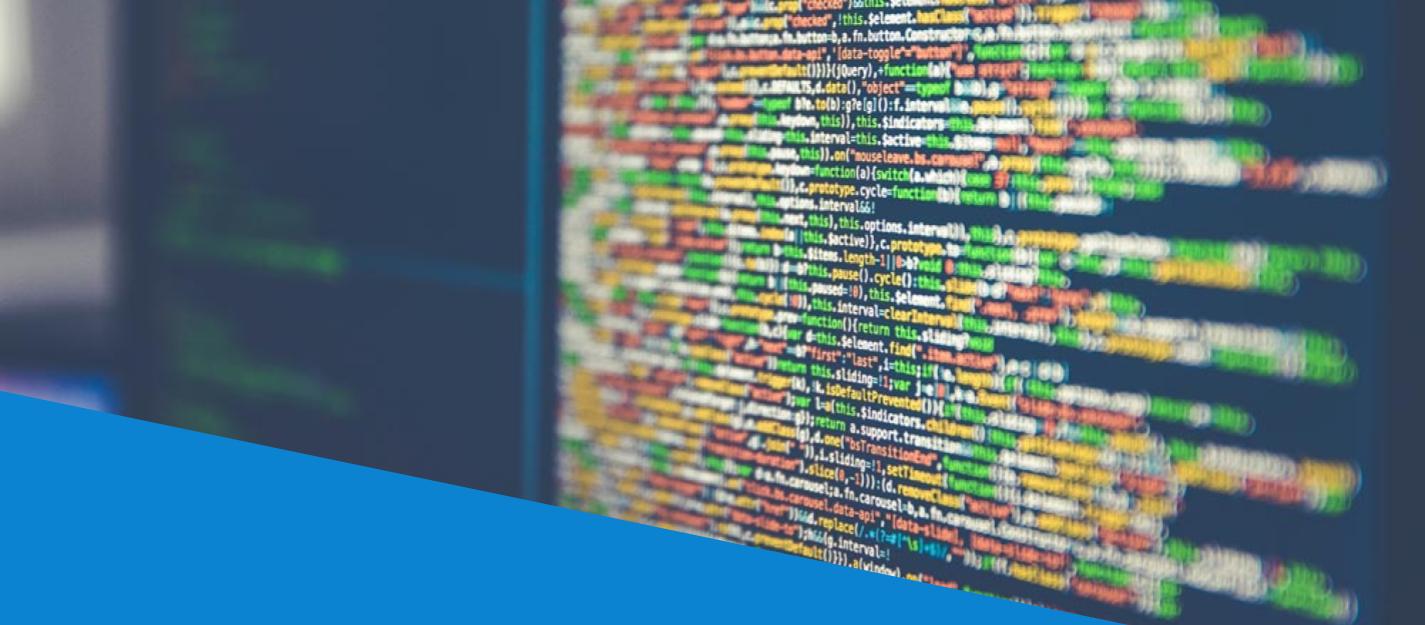Posted by James Eisner ● 3/7/18 3:28 AM
Build vs Buy Software: Which is Best for Your Company?
Build vs buy software. Which is better? That is the question. At some point, you’ve probably thought about upgrading your enterprise content management (ECM) system or one of your other business solutions. It’s not so much a question of “if” as it is a question of “how.” Of course, it makes sense to update your systems but how should you go about doing it?
Generally, you have two options. You can either buy or license software from a third-party supplier or make the decision to build something yourself. Depending on the size and capabilities of your IT team, that can be a tough call. At first glance, building your own custom proprietary software solution can actually appear to be cheaper. However, looks can be deceiving. There are almost always hidden or unexpected costs associated with building your own business system. It’s something that many companies fail to factor into their budgets.
Now, if you’re a smaller business or don’t have a large IT team, there is almost no reason to consider building your own software. However, if you do have the ability to create your own systems, you should be aware of all of the issues that you may potentially have to deal with in the future.
The Real Cost of Custom Business Systems
The upfront cost shouldn’t be the only thing that you consider when deciding whether to build your own system or buy an external SaaS solution. While the initial price tag may be lower, you also need to be aware of the other risks and costs that come along with custom software systems. The three issues that you should take into account when evaluating if an internally built system is right for your business are maintenance, system stability, and required in-house expertise.
Maintenance
When you create an in-house solution, the system’s maintenance is solely the responsibility of your IT department’s software developers. With that in mind, you should factor in how much time it will take them on a daily basis to keep everything running smoothly. If your system isn’t connected with other external services, maintenance may not be a big issue. However, if it interacts with any other systems (like cloud services), it’s going to be demanding. Most third-party services are updated frequently. So, if you want to keep your custom system working, you’ll either have to hire additional staff or accept your IT department’s reduced capacity to handle other issues or research and implement new, exciting technologies.
In contrast, when you use the software as a service model, you don’t have to worry about maintenance. It’s the vendor’s problem, not yours. That can free up time and resources for your IT department so they can not only keep everything running smoothly but also search for new solutions that can help your business.
System Stability
When you build a custom business system, you’ll be able to make sure that it includes all the specialized features that your company needs. Initially, it will be perfect!
However, businesses change and your system will need to change along with it. That’s where the drawbacks of a custom system begin to appear. After multiple patches, workarounds, and unconventional fixes, your system can become increasingly unstable. As each update builds on top of the last, you may soon find that the integrity of the entire system is compromised. That can make your business vulnerable to data breaches, system outages, and catastrophic failures.
With a SaaS solution, you’re unlikely to get the same level of flexibility you’d find in a custom system. That said, the majority of SaaS providers offer more than enough functionality to meet the vast majority of your needs. The only difference is that you won’t have to deal with any stability issues.
In-House Expertise
As your solution becomes more outdated and increasingly customized, managing it will begin to require highly-specialized in-house knowledge. IT staff who have dealt with the system for long periods of time will become increasingly indispensable, making it difficult to bring on new employees and manage labour costs. Since most custom systems are built by one or two employees, you may not notice how dependent you are on them until they’re on vacation when a major problem hits. With no one experts around, you’ll be in a tough spot trying to get your system back up and running.
On the other hand, most SaaS products are designed to be easy to use. The amount of time needed to train new hires on how to use your system will be dramatically lower, making onboarding easier and giving you more flexibility with your staffing decisions.
Buying is Usually Better
While a custom ECM or business system has a lot of benefits, it is also a lot of work. The continuous maintenance, long-term system integrity, and costs of preserving in-house knowledge generally make buying better than building. That is especially true if your company lacks a large IT department.
That’s not to say that custom systems don’t have a place. If you have a niche requirement, they can make a lot of sense. You just need to be prepared for the long-term costs that will come along with them. However, for more general system requirements, buying an off-the-shelf software as a service solution is almost always the best the way to go. It saves you time and, in the big picture, money. It’s no wonder that so many companies are choosing to buy instead of build.
Modernize with AODocs
AODocs is a flexible, cloud native content management platform designed to increase business agility by replacing legacy/on-premise systems with a scalable SaaS environment that allows business users to build and control their content-rich processes.
Tags: Technology



